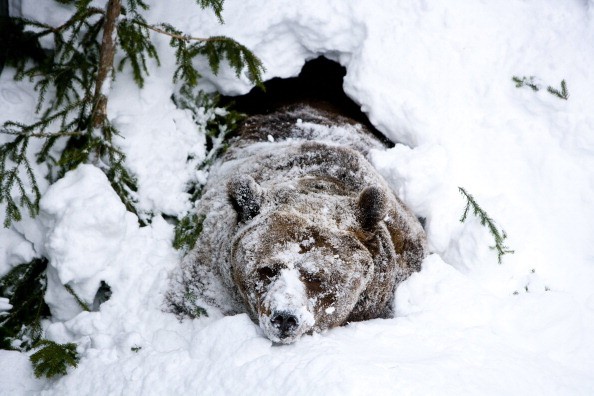An almost perfectly preserved 3,500-year-old bear was found in Siberian permafrost. The Etherican brown bear was found by reindeer herders in 2020 and is now being autopsied by researchers at North-Eastern Federal University.

Perfectly Preserved 3,500-Year-Old Bear
A female brown bear was found perfectly preserved for 3,460 years. According to researchers at North-Eastern Federal University, the bear is estimated to be 5 feet tall and weighs 172 pounds. Interesting Engineering reported that the bear was found at the permafrost on Bolshoy Lyakhovsky Island, which is a part of the New Siberian archipelago.
The scientists named the bear after the Bolshoy Etherican River, naming it the Etherican brown bear. Due to extreme weather conditions, researchers were able to study the brown bear's soft tissue and the last meal remained.
Lazarev Mammoth Museum Laboratory Chief Maxim Cheprasov stated that finding a complete carcass of an ancient brown bear is a unique experience. Skeletons or skulls were only the usual finds for researchers to examine.
He stated, "For the first time, a carcass with soft tissues has fallen into the hands of scientists, giving us the opportunity to study the internal organs and examine the brain."
Autopsy
By cutting the bear's skin, the Reuters reported that the whole team inspected its brain and internal organs as they conduct various cellular, microbiological, virological, and genetic tests.
The pink tissue and yellow fat of the bear were also visible during the autopsy, making it easy for the researchers to study the Etherican brown bear. A vacuum cleaner was also used for the skull in order to remove the skull bone dust before extracting its brain.
Cheprasov added that the analysis showed that this bear does not differ from the modern bear from north-east Russia when it comes to its DNA. The bear lived about 2-3 years before it died from an injury to its spinal column.
Aside from this, the scientists found the bear's final meal intact that consists of bird feathers and plants still in its stomach, thanks to the Siberian temperatures that helped preserve the bear completely.
Discovering the bear on the island remains unclear as Business Insider reported that it is one divided from the mainland by a 50 km strait. The preserved bear might have crossed over the ice and swum over, making it visible to the reindeer herders.
The Lyakhosky islands contain some of the richest treasures in the world when it comes to paleontology, which is not surprising that it attracts both scientists and ivory traders as they hunt woolly mammoths. The bear is still being tested for researchers to determine its exact biological age, the exact time it died, and other causes of death.
Related Article : Dinosaur Remains Reveal First Mammal Eaten, Earliest Evidence of Discovering a New Food Chain

ⓒ 2025 TECHTIMES.com All rights reserved. Do not reproduce without permission.




